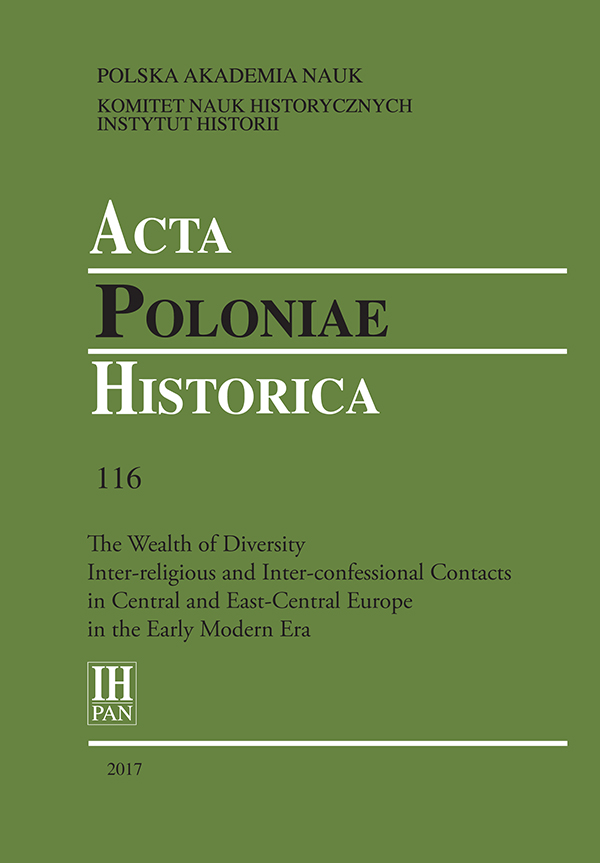Communities and Their Temples: Orthodox, Jewish, Protestant, and Catholic: Religious Delimitations in the Historical Topography of Słuck
DOI :
https://doi.org/10.12775/APH.2017.116.01Mots-clés
urban space, religious and confessional diversity, Jews, Grand Duchy of LithuaniaRésumé
The article analyses the religious topography of Słuck (today, Sluck in Belarus). Słuck was an important hub of Orthodoxy and Protestantism in the Grand Duchy of Lithuania; moreover, 38 percent of its population was Jewish. Detailed analysis of legal documents and urban inventories showed that there were areas within the town bounds which were reserved for the Christian communities active there. The spatial balance was upset in the former half of the eighteenth century, with Catholic orders brought into the town. The Jews were the only group that was legally barred from choosing a place to reside. The municipal authorities endeavoured to restrict the Jewish settlement to one street. Members of Jewish financial elite were the only ones to succeed in crossing the legal boundaries and settle down at the ‘Christian’ streets ofSłuck.Références
Degiel Rafał, Protestanci i prawosławni. Patronat wyznaniowy Radziwiłłów birżańskich nad Cerkwią prawosławną w księstwie słuckim w XVII w. (Warszawa, 2000).
Frick David, ‘Jews in Public Places: Further Chapters in the Jewish – Christian Encounters in Seventeenth Century Vilna’, Polin, xxii: Magda Teter, Antony Polonsky, and Adam Teller (eds.), Social and Cultural Boundaries in Pre-Modern Poland, 215–48.
Frick David, Kith, Kin and Neighbors. Communities and Confessions in Seventeenth-Century Wilno (Ithaca and London, 2013).
Hundert Gershon D., ‘Jewish Urban Residence in the Polish-Lithuanian Commonwealth in the Early Modern Period’, Jewish Journal of Sociology, xxvi (1984), 25–34.
Kaźmierczyk Adam, Żydzi w dobrach prywatnych w świetle sądowniczej i administracyjnej praktyki w wiekach XVI–XVIII (Kraków, 2002).
Kriegseisen Wojciech, Ewangelicy polscy i litewscy w epoce saskiej (Warszawa, 1996).
Rohdewald Stefan, “Vom Polocker Venedig”: kollektives Handeln sozialer Gruppen einer Stadt zwischen Ostund Mitteleuropa (Mittelalter, frühe Neuzeit, 19 Jh. bis 1914) (Stuttgart, 2005).
Teller Adam, Money, Power and Influence in the 18th Century. The Jews on Radziwiłł Estates (Stanford, 2016).
Téléchargements
Publiée
Comment citer
Numéro
Rubrique
Licence
Title, logo and layout of journal are reserved trademarks of APH.Stats
Number of views and downloads: 434
Number of citations: 2



